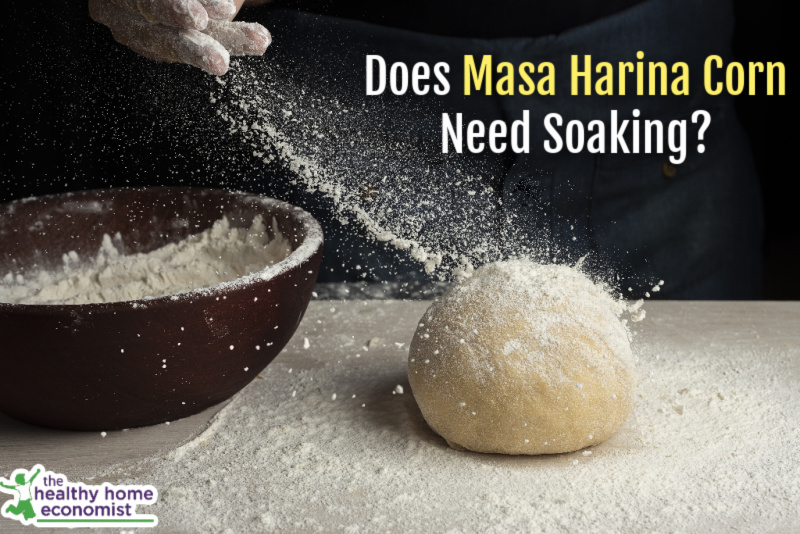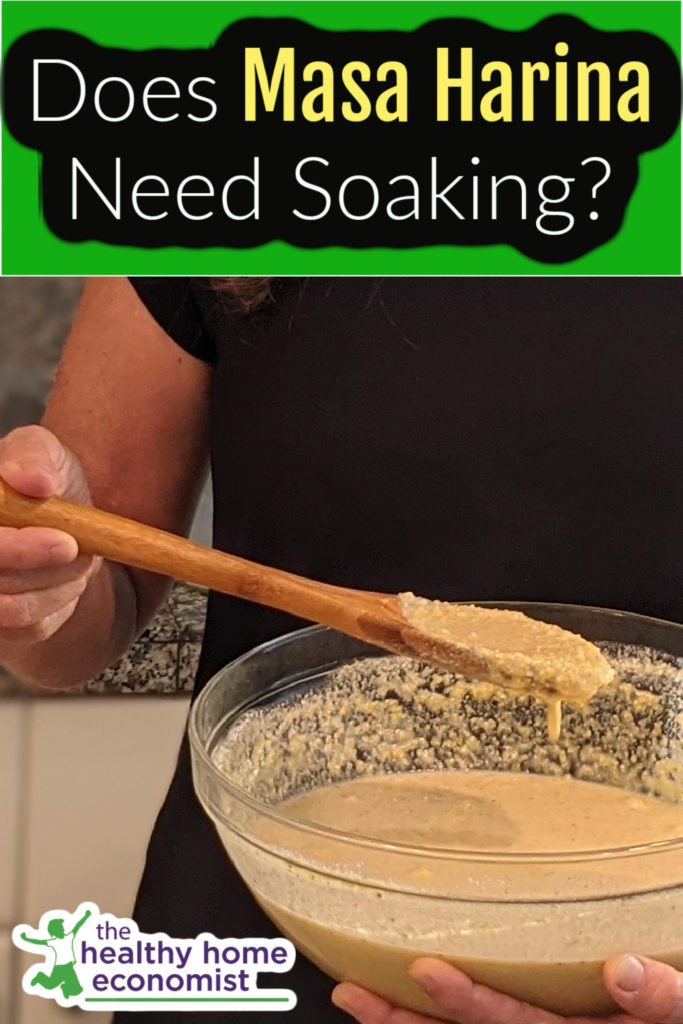Table of Contents[Hide][Show]
Overview of whether masa harina cornflour pretreated with lime by the manufacturer needs to be soaked at home prior to making traditional Mexican dishes.
Masa harina is a staple in Mexican cooking. It is a form of gluten-free yellow, white, or blue corn flour that is used for making tortillas and tamales, among other dishes.
Masa harina is made by taking dried flint corn and soaking the kernels in limewater or another alkaline liquid. This process is known as nixtamalization, a food preparation method practiced by traditional Native American cultures and documented as far back as 1500 B.C. (1)
This important step releases the vitamin content of the corn. In particular Vitamin B3 or niacin, an important nutrient for detoxification becomes bioavailable. This nutrient is critical for those who consume corn as a staple, avoiding the often painful and unsightly disease known as pellagra.
Once treated with lime, the kernels are dehydrated and put through a fine-grade grinder to make instant flour. (2)
Soaking Masa Harina?
Since masa harina is already treated with lime, some may wonder if it is still necessary to soak the cornflour prior to cooking.
The answer is both yes AND no!
Don’t Soak with Limewater
You don’t need to soak masa harina in limewater like you would corn meal or regular corn flour. This is because it has already been pretreated with an alkaline solution (usually limewater) by the manufacturer.
DO Soak with Acidic Medium
However, you DO still need to soak the masa harina in a slightly acidic medium such as buttermilk, yogurt, kefir, or clabbered sour milk. Nondairy options include water plus lemon juice or liquid whey. This will deactivate the phytates in the corn to allow maximum digestibility and prevent gastrointestinal irritation.
Hence, corn is unique among grains in that it requires both an alkaline AND acidic-based soak. This recipe for soaked cornbread outlines the process.
Cornmeal vs Masa Harina
Thus, substituting masa harina for cornmeal or regular cornflour in recipes will not ultimately avoid the inconvenience of soaking if you wish to create a dish that is maximally digestible and bioavailable.
The only way to avoid this step entirely is to use sprouted cornflour (such as this brand).
Sprouting achieves the dual purpose of releasing vitamins AND eliminating antinutrients.
This article on soaking versus sprouting grains provides more information and context to consider to help you decide which method to choose in your own kitchen!
I personally find soaking corn produces a more desirable texture to the final dish. It is also very easy on the stomach. Just be sure to stick with corn that is both organic and nonGMO verified due to cross-contamination, a widespread problem in corn crops today.
Do you use masa harina in your home? How do you use it and what dishes do you make?

References
(1) What is Masa Harina?
(2) Masa Harina







when you say whole kernal corn, is the same as organic popcorn? or something different?
First, thank you!
You have opened my eyes to so much- you seem sincere and without a hidden agenda. This alone is why I tell all my family and friends about you. ❤️
Question regarding soaking corn –
Once soaked, can you use the limewater and kefir , or do you need to strain it out? In other words, is it safe to consume & cook with?
Thank you!
You friend in Chicago
Yes, you just consume the limewater and kefir with the rest of the corn batter. Thanks for the kind words!
I want to make hominy grits from sprouted corn. I sprouted my corn kernels and am starting the nixtamalization process (for vit. B3). Is that step not necessary though after sprouting, please?
Typically i am reading for that process to use Cal/Pickling Lime in the water, heat to a boil, let it soak overnight, then wash/scrub vigorously to remove the pericarp and lime, to produce hominy. I’m using the limewater from Nourishing Traditions instead of putting the Cal itself into the water, in hopes i can rinse it more gently after soaking and not loose all my sprouts (a bit long) through the colander! Any advice on a better way to go about it, please?
Also, I am a bit curious about doing a simultaneous soak in an alkaline (limewater) and acidic (whey etc.) medium. I imagine they neutralize each other to some degree? Would it be more effective done separately? (Sorry, fairly new to sprouting/fermenting, but i love learning and implementing it!) Thanks for all your advice and articles! <3
Ok when would you nixtamalize ? If first, do you need to dehydrate before grinding into cornmeal ?
Yes you would have to dry the kernels before grinding.
Thank you for all you do. You are an inspiration to many. I would like to make tortillas from whole kernel corn. Also Cornbread from the same whole kernel corn. Any thoughts on the order of steps to produce this ? Nixtamalization seems fairly straight forward, but the soaking ?
I am working on the tortillas. Stay tuned.
As for cornbread, simply grind the corn kernels into the level of flour coarseness you want …. then soak in limewater and buttermilk overnight at a ratio of 1 cup limewater: 1.5 cups buttermilk : 3 cups corn meal/flour. Hope that helps 🙂